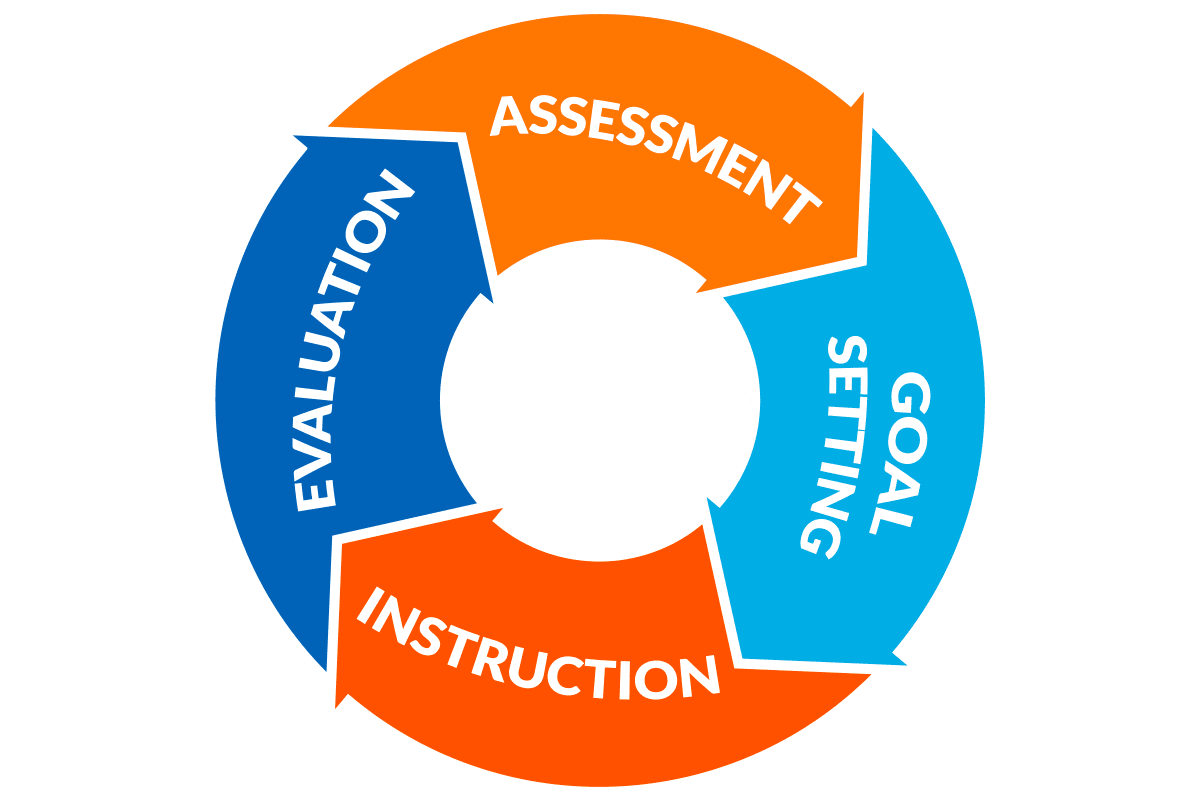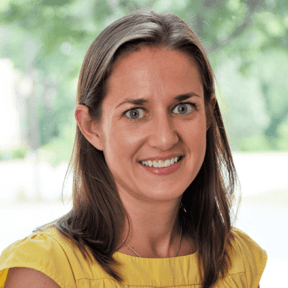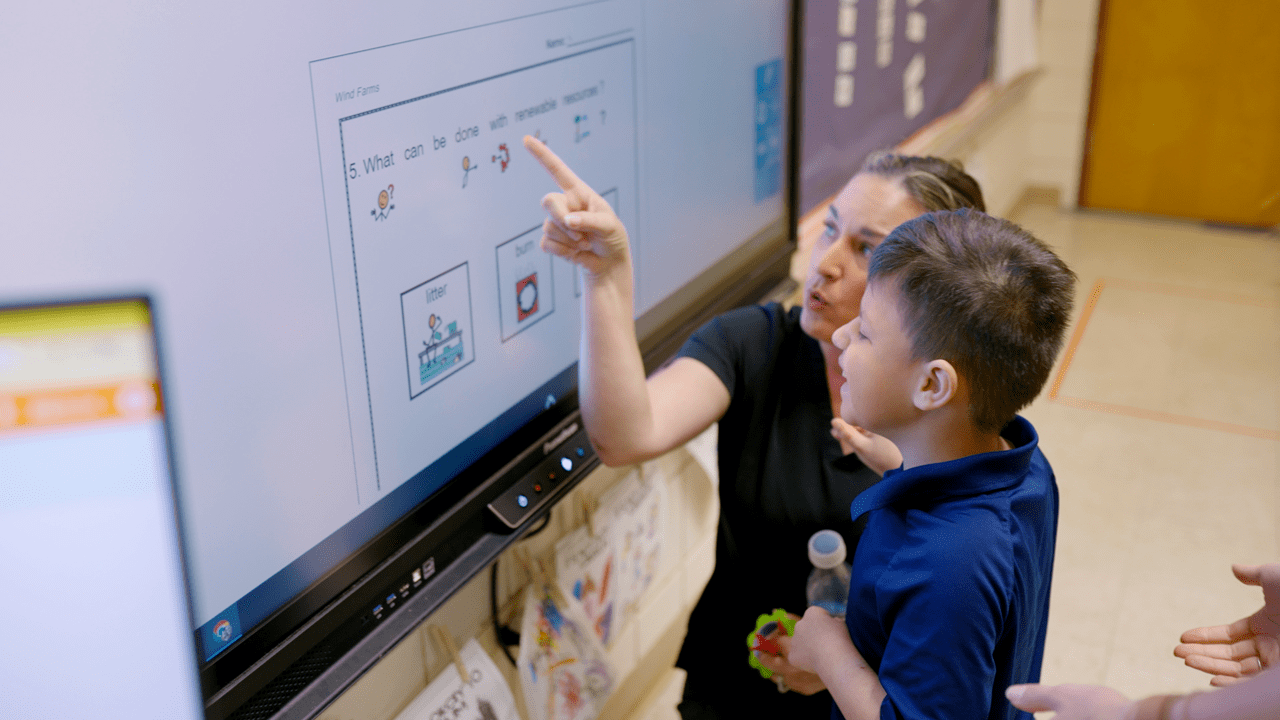Assessments are an important and necessary part of an educator’s job; fortunately, there’s a wealth of information to be gained from them. Each type of assessment serves its own purpose, whether formal or informal, with benefits and limitations that can be better understood in the context of the teaching process as a whole.
Assessments as Part of the Teaching Process

The teaching process generally involves assessment, goal selection, instruction, and evaluation of both student performance and instructional strategy. These four steps make up a cycle, not simply a linear process. This dynamic cycle involves repeating and re‑evaluating steps along the way, with each step affecting the others. As a key step in that cycle, assessment can serve not only as the beginning of the teaching process, but also as a bridge from evaluation to consideration of what the next step will be.
Formal Assessments
Formal assessments include standardized measures that are often administered to an entire class, grade level, or group of students. The same assessment is administered to all students at the same time to get a picture of each student’s performance in comparison to other students.
Examples of Formal Assessments
- Beginning- and end‑of‑year testing
- ELA measures (reading and writing)
- Standardized math tests
Informal Assessments
Informal assessments are non‑standardized measures that are often personalized to the student. They can be given flexibly throughout the school year to provide a snapshot of a student’s skill in a specific area at any given time.
Examples of Informal Assessments
- Work samples
- Portfolios
- Observations
- Checklists
Comparing Formal and Informal Assessments
Formal Assessments
Provide a Broad View
Schools, districts, and even states use formal assessments to measure student and teacher performance on a broad level. The data generated from these evaluations allow systems to look at trends across months and years at a classroom, school, system, and state level. Educators and administrators use this data not only to evaluate students but also to evaluate their curricula, instruction, and educational systems overall.
Informal Assessments
Provide Detailed Information
What we learn from informal assessments is highly individualized to a student. The information gathered can be directly applied to creating individualized goals and instruction for students with specialized needs. Rather than getting a broad picture of how a student performs with grade‑level content, a teacher can do a deep dive to explore specific skills.
For example, informal assessments can shed light on what a student knows and can apply regarding individual aspects of, say, grammar usage. An informal assessment is also a useful strategy for breaking down a skill, which helps educators figure out which parts of a task to target for instruction.
Formal Assessments
Are Standardized
Because formal assessments are standardized, there’s a prescribed way of administering and scoring them. Administering them with fidelity often involves educator training—and typically, they’re developed and required by a school, a district, or an entire state. Standardization can take the guesswork out of the process for teachers and can level the playing field by providing a common ground for measuring performance across all students.
Informal Assessments
Offer Flexibility and Insightful Details
Individual teachers often develop informal assessments to meet the specific needs of a student or set of students. Within an informal assessment, a teacher can adjust the next steps based on a student’s performance or feedback. If a student is unresponsive to the presentation of a prompt or instruction, these elements can be adjusted as the assessment proceeds. As teachers tweak the administration and instruction along the way, they can gather a wealth of information about the student’s learning style that may not be evident in a formal assessment.
One type of informal assessment that can provide deep insights into a student’s thinking and problem solving is observation. While seemingly simple, it can provide the educator with an endless amount of information that can’t be gathered from a standardized assessment.
How to Use Information from Both Types of Assessments
Formal assessments are useful as a student performance measure, for determining diagnosis, and for placement into specialized programs or small groups in the classroom. They can be used to evaluate the effectiveness of curricula and instruction as well. Individual student performance on a standardized measure can be used to identify areas of need to be targeted on an IEP.
With an informal assessment, an educator can take a deeper dive into areas of need that have been identified on a formal assessment. For example, if grammar has already been identified as a general area of need, an informal assessment can help an educator determine more specific strengths and needs in that area. A focused assessment might be done on pronouns, such as receptive understanding, noun/pronoun agreement, usage in a sentence, different types of pronouns, and so on. After an educator gains knowledge of a student’s specific strengths and needs in a more focal area such as this, precise and personalized goals and instructional plans can be made.
The Takeaway
When formal and informal assessment data are combined, the information can be used to develop a meaningful and actionable present level of academic and functional performance (PLAAFP) to be included on an IEP. Relevant and realistic goals can be built using the student’s strengths and areas of need as identified.
Both formal and informal assessments have their benefits and limitations, but when used together, they can provide a wealth of student information that can significantly help educators help their students.



